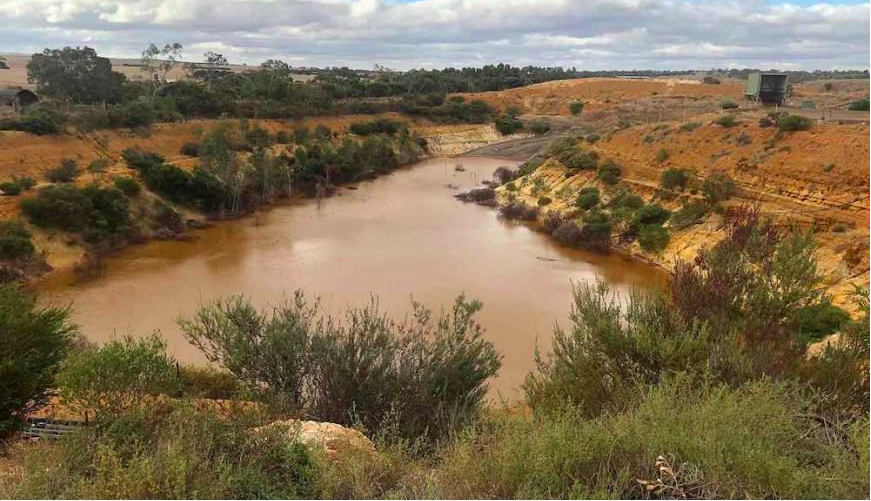While it continues to actively explore alternative storage technologies, such as pumped hydro and hydrogen, Australia has dipped its toe into compressed air energy storage with a new project launched at a disused mine in South Australia (SA).
The Angas Zinc Mine in Strathalbyn, 60 kilometres southeast of Adelaide, is being transformed into a 5 MW/10 MWh fuel-free battery, which will use electricity from the grid to produce compressed air that can be turned back into energy.
The compressed air is stored in a purpose-built underground cavern at the mine kept at constant pressure using hydrostatic head from a water column.
During charging, heat from the compressed air is collected and stored before the cooled air displaces water out of the cavern up to a water reservoir on the surface. To discharge, water flows back into the cavern forcing air to the surface under pressure where it is heated with the stored thermal energy and drives a turbine to generate electricity.
http://https://www.youtube.com/watch?v=kvyuzSto0vU
As a fuel-free storage technology, A-CAES has similar applications to pumped hydro, which works by pumping water up-hill when demand is low and then releasing it down pipes through a turbine to generate electricity when demand is high.
Most notably, it can provide the dispatchability required to ensure reliability of the power system as more solar and wind power is installed, ARENA says.
“Compressed air storage has the potential to provide similar benefits to pumped hydro energy storage, however it has the added benefits of being flexible with location and topography, such as utilizing a cavern already created at a disused mine site,” ARENA CEO Darren Miller said , noting that the pilot project could open up a new form of renewable energy storage in Australia.
“While being a commercial demonstration at this stage, Hydrostor’s innovative way to store energy with air could add to Australia’s grid-scale storage capability, complementing pumped hydro and batteries.“
While it will enable the integration of variable renewable energy resources, such as solar and wind, the energy storage will also dispatched into the National Electricity Market to provide synchronous inertia, load shifting, frequency regulation, and support grid security and reliability.
Funding & warm welcome
The $30 million commercial demonstration project delivered by Canada’s Hydrostor has been awarded a combined total of $9 million of grant, including $6 million from the the Australian Renewable Energy Agency (ARENA), alongside $3 million in funding from the SA government through its Renewable Technology Fund.
Hydrostor CEO Curtis VanWalleghem said in comments the company is very appreciative of the contributions from ARENA and the Government of South Australia for its first Australian A-CAES project.
“We’re excited to have the opportunity to demonstrate the significant benefits of adding our flexibly-sited, low-cost, bulk energy storage to the diverse range of technology helping Australia transition to a lower-cost, high system strength, cleaner electricity grid.”
The new project was also welcomed by Minister for Energy Angus Taylor, who said the federal government was pleased to support this project that will repurpose a brownfield mine site and support reliable 24/7 power.
“Hydrostor’s A-CAES project is a welcome addition to Australia’s rapidly expanding renewable generation and storage technologies,” he said.
In a joint press release, Minister for Trade, Tourism and Investment Simon Birmingham said the project could be a game-changer for energy storage technology in SA.
“We’ll continue to back companies that invest in innovative emission-free storage solutions that develop a stronger and more reliable electricity supply,” he said.
This content is protected by copyright and may not be reused. If you want to cooperate with us and would like to reuse some of our content, please contact: editors@pv-magazine.com.









By submitting this form you agree to pv magazine using your data for the purposes of publishing your comment.
Your personal data will only be disclosed or otherwise transmitted to third parties for the purposes of spam filtering or if this is necessary for technical maintenance of the website. Any other transfer to third parties will not take place unless this is justified on the basis of applicable data protection regulations or if pv magazine is legally obliged to do so.
You may revoke this consent at any time with effect for the future, in which case your personal data will be deleted immediately. Otherwise, your data will be deleted if pv magazine has processed your request or the purpose of data storage is fulfilled.
Further information on data privacy can be found in our Data Protection Policy.